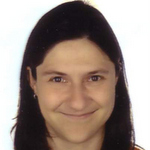Beyond weather - MetUM and the art of weather forecasting
Posted on 4 October 2011
Beyond weather - MetUM and the art of weather forecasting
 Vanesa Magar, one of our Agents, describes the Met Office's weather simulation software.
Vanesa Magar, one of our Agents, describes the Met Office's weather simulation software.
In the global web-enabled communications era, most of us don't think twice before consulting the weather forecast to plan our daily or future activities. We take this service for granted and never ask questions. Who produces the forecasts and how are they done? How accurate are they? The Met Office is the United Kingdom's national weather service. It was established in 1854 under Robert FitzRoy, a pioneering meteorologist, as a service for mariners. In 1859 its first gale warning service was set up, and by 1861 Robert FitzRoy effectively had become the UK's first weather forecaster by publishing his forecasts of future probable weather in the national press. Thanks to him, accurate weather prediction became a reality. The Met Office recently celebrated its 150th anniversary.
As a science-led organisation, the Met Office develops its own numerical modelling systems for research and operational forecasting. Its current weather prediction model is the Unified Model (MetUM), a seamless model with different configurations for different space (regional vs. global) and time scales (weather vs. climate). Such configurations may be, for instance, a high-resolution atmospheric model for a short-range weather forecast, or a global atmosphere-ocean coupled system for climate modelling. The MetUM is continuously being modified and improved to take into account advances in understanding of atmospheric processes or in computing power. The current version of the MetUM uses a three-dimensional dynamical model of the atmosphere, and parameterisations of physical processes such as convection, turbulence, heat radiation, cloud dynamics, physics at microscales and drag due to mountains. The MetUM can be coupled with ocean models, wave models, chemistry to form an Earth System model, to name but a few.
Local weather forecasts in the UK are based on the newest variable resolution UK (UKV) model, which has a highest resolution of 1.5km and is accurate up to 36 hours in advance. At these resolutions, it is claimed that the model can capture the behaviour of individual showers! These dramatic improvements in forecasting powers will lead to further and further automatisation in weather forecasting and reduce the role of human forecasters, who use their knowledge and experience about weather systems to interpret and qualify the current models.
Such an ambitious model needs to overcome some considerable software-engineering challenges. Using several thousand processors efficiently is a challenge in itself, and one that is best explained with an example. Having a few friends help you to move house will be far quicker than doing it yourself. However, problems with logistics and communication increase as more and more friends offer help, so that simply having more helpers has no effect on how quickly you can complete the job. An additional problem is that all hardware will fail at some point, and many processors are required to gain the speed required for the MetUM calculations. This means that it becomes more and more likely that components will fail during the simulation.
The Met Office provides a licence to those wishing to use the MetUM and collaborate in its development. Licences can be for research or for operational and commercial use.

